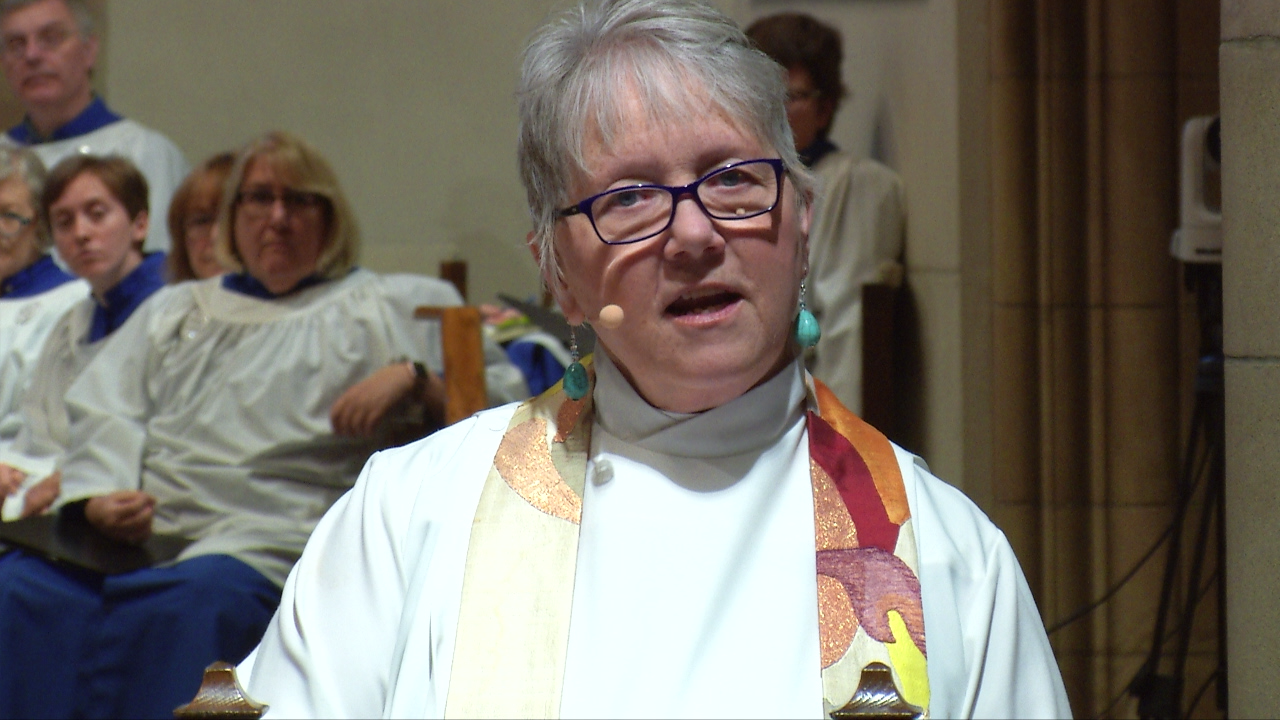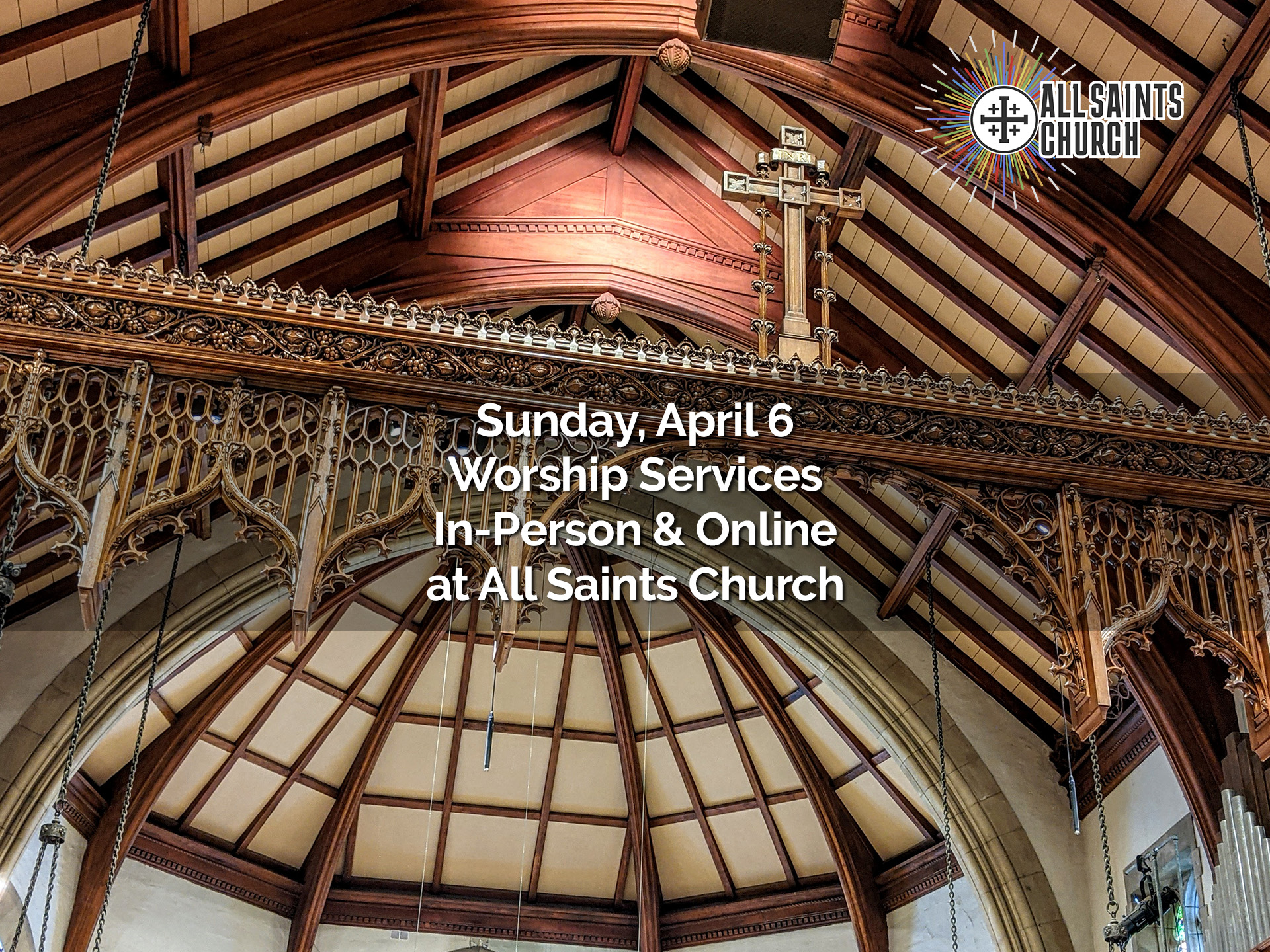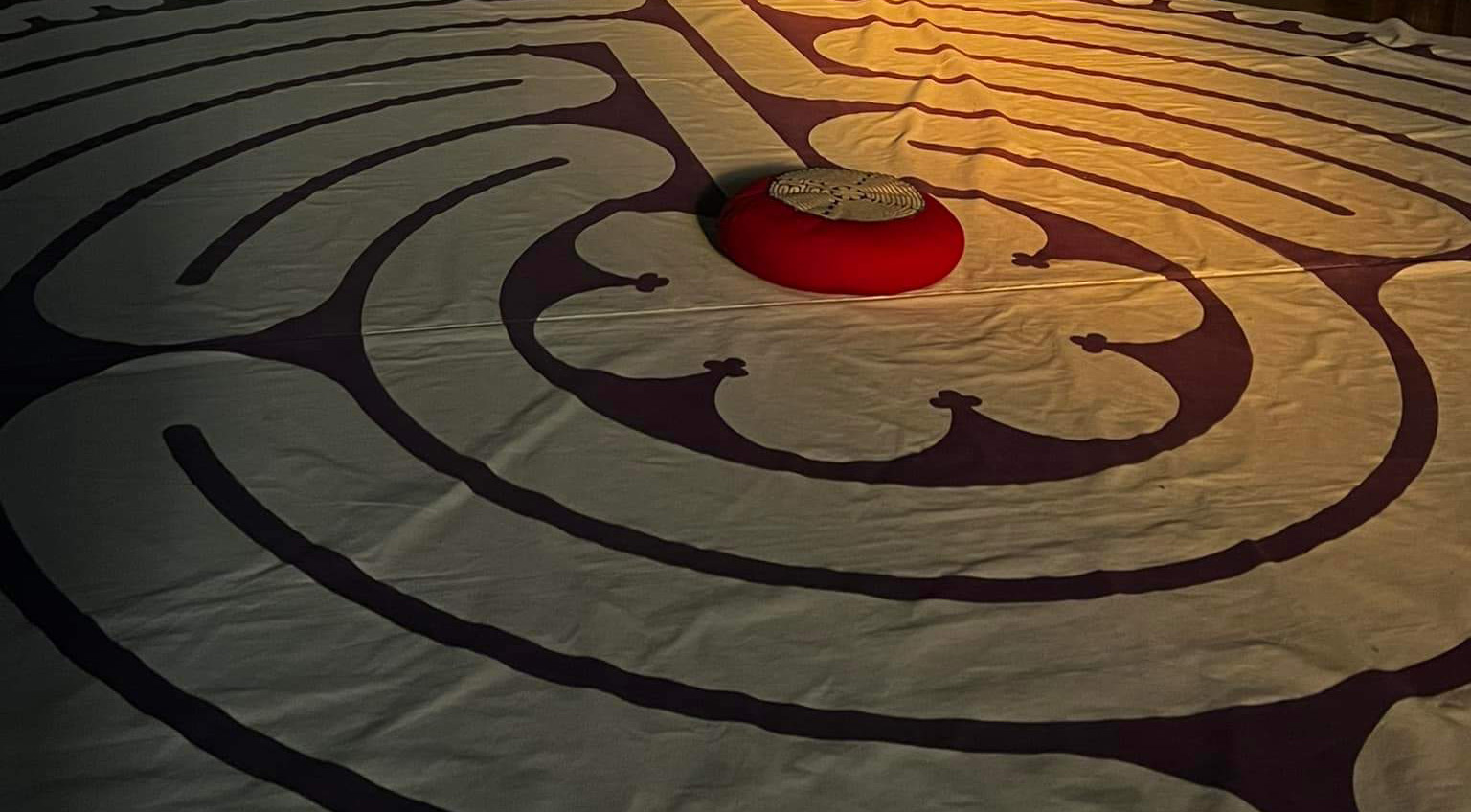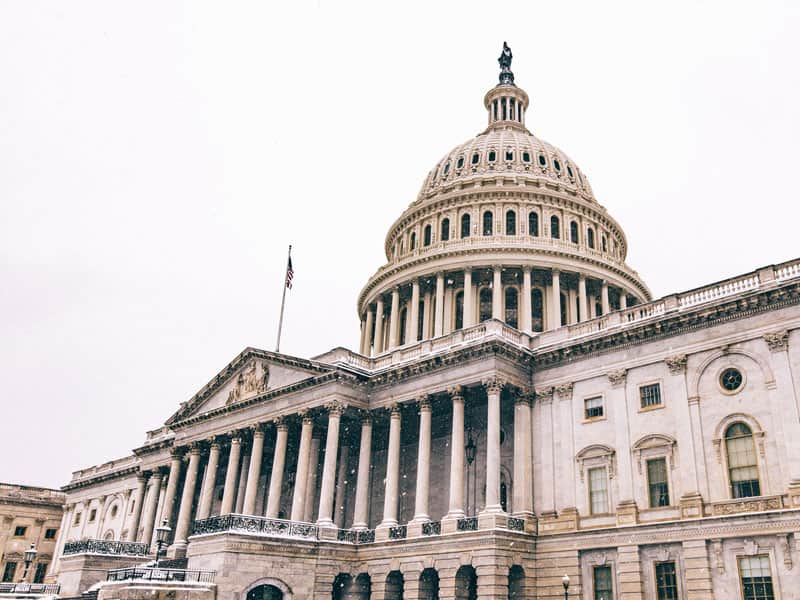“The great Easter truth is not that we are going to live newly after death, but that we are to be new here and now by the power of the resurrection.”
Sermon by Susan Russell at All Saints Church, Pasadena, on Sunday, April 8, 2018.
========
Breathe on us, breath of God
Fill us with life anew.
That we may love what thou dost love
And do what thou wouldst do. Amen.
+
And just like that it is the Second Sunday of Easter.
Note that it is the Sunday “of” not the Sunday “after” … because Easter is a Season: not just a Sunday. And we are very good at “doing Easter” here at All Saints Church aren’t we, with the flowers and vestments, festival hymns and grand processions, it’s a “pull out all the stops” liturgical occasion for the best of all reasons: Christ is Risen: Christ is Risen, Indeed!
But now the lilies are browning around the edges, the ears are off the chocolate bunny, the Easter dress is at the cleaners and the awesome impact of those “alleluias” fades as we get back to business as usual. There’s no question that we know how to do Easter as an event: a question this morning is … How are we at Easter as a way of life?
My favorite Easter card says:
The great Easter truth is not that we are going to live newly after death, but that we are to be new here and now by the power of the resurrection
But “here and now” is easier said than done. Yes, we are “Easter people” but as the lilies fade and the chocolate gets eaten, it’s very easy to make Easter a Sunday to remember rather than a truth to live — particularly in these troubled and trying times.
Well, if it’s any consolation, our 1st century spiritual ancestors struggled as well.
Scripture gives us a whole series of “post – resurrection” stories that have two things in common:
#1 – Jesus showed up and #2 – The disciples didn’t get it.
As Luke tells the story, the women at the empty tomb had to be reminded by the angel about the part where Jesus said he would rise after three days — and then when they reported back the disciples didn’t believe them.
There are four post-resurrection stories in John’s gospel. The first is the one where Mary thought Jesus was the gardener until he spoke her name. The second and third are in our gospel for today — when Jesus appears to the disciples in the locked room when Thomas is out running an errand and then returns when Thomas is back in the room.
The fourth is in the 21st chapter — when Jesus appears to the disciples on the lakeshore. And yet the conclusion that story reads: “This was now the third time Jesus appeared after he was raised from the dead.” Which means either John couldn’t count … or the appearance to Mary didn’t count because she was a woman. I’ll let you do the math.
So while I was preparing this sermon I did one of the things you do when you’re procrastinating writing a sermon: troll Facebook. Mostly you’re just wasting time — but sometimes you hit pay dirt.
I wish I’d gotten this to Melissa in time to print in the liturgy for today but it’s a cartoon that shows three women and a group of men … and the caption reads:
“So ladies, thanks for being the first to witness and report the Resurrection and we’ll take it from here.” I shared it on my social media platforms with the title “The Feast of the Mansplaining of the Resurrection” … and I know some of you saw it because you shared it, too.
I shared it on my social media platforms with the title “The Feast of the Mansplaining of the Resurrection” … and I know some of you saw it because you shared it, too.
But I also started following the cartoonist — David Hayward — on Instagram … and was super intrigued when he followed up his resurrection cartoon with this narrative: “The other day I posted a cartoon illustrating women being the first to witness and report the resurrection and that the men were going to take it from there.
It went viral and is still going strong … but what drew my attention was the amount of mansplaining I received, like:
“Well, actually, an angel was the first witness”, or,
“Well, actually, in those days women were more oppressed so it was progressive that they were allowed this honor, and Jesus told his male disciples that they should be the ones to report this around the world in the Great Commission”, or,
“Well, actually, in the Roman Empire…”, or,
“Not all the gospels agree so…”,
and on and on and on.
I decided it must be exhausting being a woman because in just one day I got exasperated, angry, and hopeless. I was even tempted to shut up because life’s just easier that way. I shared this frustration with my online community and the women there said “You have no idea.”
David Hayward’s cartoon on Instagram tapped into the sad truth
that two thousand years later we’re still getting stuck
on who gets to tell and who needs to be told
instead of getting all hands on deck
proclaiming the great Easter truth
that we are to be new here and now
by the power of the resurrection
I’ll get back to that in a minute, but first let’s return to the fearful disciples — hiding behind locked doors.
Jesus appeared and “breathed on them.” In John’s Gospel, this is the birthday of the Church … a “fast forward” to the Pentecost story we will celebrate at the end of this Easter season — when the Spirit fills the disciples with faith rather than fear and they began to take up the ministry of Jesus on earth: to become the Body of Christ — new, here and now, by the power of the resurrection.
In this story of new life and creation there are echoes of Genesis, as the Spirit brooded over creation and God breathed life into the first humans and of Ezekiel where new life is breathed into the valley of dry bones. It is the story we hear every single year on the second Sunday of Easter.
Breathe on me breath of God
Fill me with life anew
That I may love what thou dost love
And do what thou wouldst do.
It is a favorite hymn which has become a favorite prayer: to be filled with the breath of God and understand more fully the will of God … that’s what Easter as a way of life is all about.
Not only to know what God would do:
To do what God would do.
And it’s a way of life we live one day at a time: one step at a time — trusting that even if we take a mis-step, we never journey so far from God that the life giving breath of that Spirit is beyond our reach: even when it seems impossible to believe. Even when we doubt.
This morning, that’s the lesson we learn from Thomas.
Thomas — one of the faithful 12 — goes down in history forever as “doubting Thomas” for his refusal to accept the testimony of others, but demand his own experience of the risen Lord.
What took him away from the community that day? Why was he out of the room? Had they he drawn the short straw when it was time for someone to go out for pizza? Had they gotten into another argument about who was the greatest and Thomas had left in a huff or gone off to compose himself?
Imagine, missing one Sunday, and coming back to hear “Guess who showed up while you were gone?” Would you believe it?
I’m a little bemused, actually, about how quickly we make Thomas the poster child for faithless doubt when none of them were batting 1000 on the post-resurrection encounters.
The women at the tomb who didn’t get it until the angel reminded them, the men who didn’t believe the women’s … and these “faithful” disciples — after Jesus showed up and breathed the Holy Spirit on them — still hiding behind a locked door a week later.
One of Thomas’ great virtues was that he absolutely refused to say that he understood what he did not understand, or that he believed what he did not believe. There was an uncompromising honesty about him — he was not afraid to own his doubt.
Verna Dozier, my favorite Anglican theologian, famously wrote:
Doubt is not the opposite of faith: fear is. Fear will not risk that even if I am wrong, I will trust that if I move today by the light that is given me, knowing it is only finite and partial, I will know more and different things tomorrow than I know today, and I can be open to the new possibility I cannot even imagine today.
Thomas had doubts, but he refused to surrender to the fear which kept the disciples shut up in that locked room. He both ventured out and then had the courage to return: to face a community which had had an experience he did not share and be willing to insist on his own experience of God.
And it was in the community that Jesus came to him, and without so much as a confession or absolution, offered him what he needed to believe: “Need to see my hands: here you go. Want to touch my side: go for it.” Jesus showed up, met him where he was and gave him what he needed to believe.
Of all the disciples, for me the story of Thomas speaks with particular power to generations of Christians who inherit the stories of the risen Lord, but must — at some point — insist on their own experience of Christ.
Through that lens, Thomas becomes not a symbol of faithlessness but of courage.
Courage to ask for what Thomas asked for — and to trust that just as Jesus met Thomas where he was and gave him what he needed to believe He will do the same for us when we need Him to.
What we celebrate as we journey into this Easter season is the awesome privilege and responsibility of being the church in the world: being Jesus on earth: being the place where those who come seeking the risen Christ, doubts and all, not only seek but find that breath of new life that God offers all creation.
And how does that happen?
I’m remembering a baptism I attended many years ago at St. Mary’s, Palms.
After placing the oil on the baby’s forehead, the priest said, “Let us welcome the newly baptized.”
And then he added — holding her high in his arms to face the congregation — “And how is she going to learn to be a Christian? By watching you.”
All these years later I wonder: What did she learn by watching them?
I hope she learned that doubt is not the opposite of faith — fear is.
I hope she learned to move by the light that was given her,
knowing it was only finite and partial,
and trusting that she would know more and different things tomorrow
so she could be open to the new possibilities she couldn’t even imagine today.
I hope she learned, like Thomas, to ask for her own experience of the risen Christ.
And I hope that experience called her to put her faith into action.
I hope she was one of those million young people who filled the streets for the March for Our Lives last month.
Those are some of the things I hope for.
But here are some of the things I know.
I know that here at All Saints Church we are surrounded by a great cloud of young leaders
who have learned by watching and who are following Thomas’ example of not settling for anything other than their own experience of the risen Christ; who are not settling for past generations’ solutions to intractable problems;
who are not getting stuck
on who gets to tell and who needs to be told
but are mobilizing an all hands on deck movement
to proclaim the great Easter truth
that we are to be new here and now
by the power of the resurrection.
They are loving what God loves —
their neighbors as themselves —
and they are doing what God would do …
refusing to take no for an answer as they work to
dismantle racism,
fight for just immigration reform,
stand against sexual abuse and harassment
and take on the NRA.
And they certainly don’t need anybody the mansplain the resurrection —
or anything else — to them.
On this second Sunday of Easter
as the lilies are fading and the chocolate is disappearing
and the Easter dress is at the cleaners
that is something to rejoice and be glad in.
So as we give thanks for the prophetic witness of our youth
let us also give thanks that Easter is not just a Sunday but a season
and that we have 50 days ahead of us
to celebrate the great Easter truth
… not that we are going to live newly after death,
but that we are to be new here and now
by the power of the resurrection.
Breathe on us.
Fill us.
Send us out … to do what thou wouldst do.
Alleluia. Amen.



